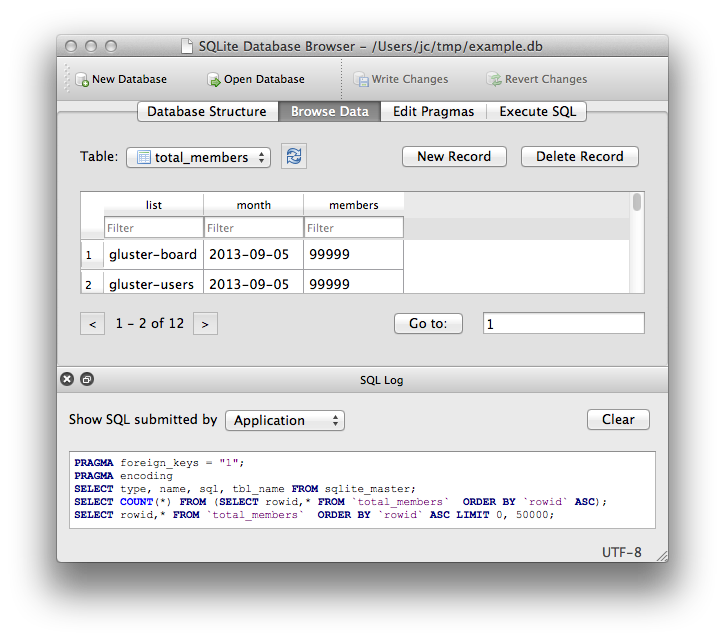

To demonstrate this, check out this snippet of code:
Sqlite database code#
Simply write your code as if the database already exists. If it doesn’t, SQLite will automatically create it (using the same name that your script is trying to access). Bottom line? You don’t need to do anything to create a database. The first time your script tries to access a database, SQLite will check to see if the file exists. SQLite’s killer feature is that it will automatically create a new database file (if one does not already exist). For more information about SQLite, check out the official SQLite documentation online.For more information about Lua programming, check out our Introduction to Lua section.
Sqlite database install#

If you want to study this topic in more depth, you can also do the following: This article covers the basic concepts using the sample code found at the bottom of this page. SQLite will create a database file if it does not already exist.SQLite reads and writes directly to ordinary disk files.SQLite is embedded in Iguana Translator so you do not need to install it.A complete SQL database with multiple tables, indices, triggers, and views, is contained in a single disk file.” How do we use SQLite with Iguana Translator? SQLite reads and writes directly to ordinary disk files. Unlike most other SQL databases, SQLite does not have a separate server process. “SQLite is an embedded SQL database engine. SQLite is currently found in more applications than we can count…”

The code for SQLite is in the public domain and is thus free for use for any purpose, commercial or private. “SQLite is a in-process library that implements a self-contained, serverless, zero-configuration, transactional SQL database engine. Not really sure what SQLite is? Read this section to familiarize yourself with some basic knowledge.


 0 kommentar(er)
0 kommentar(er)
